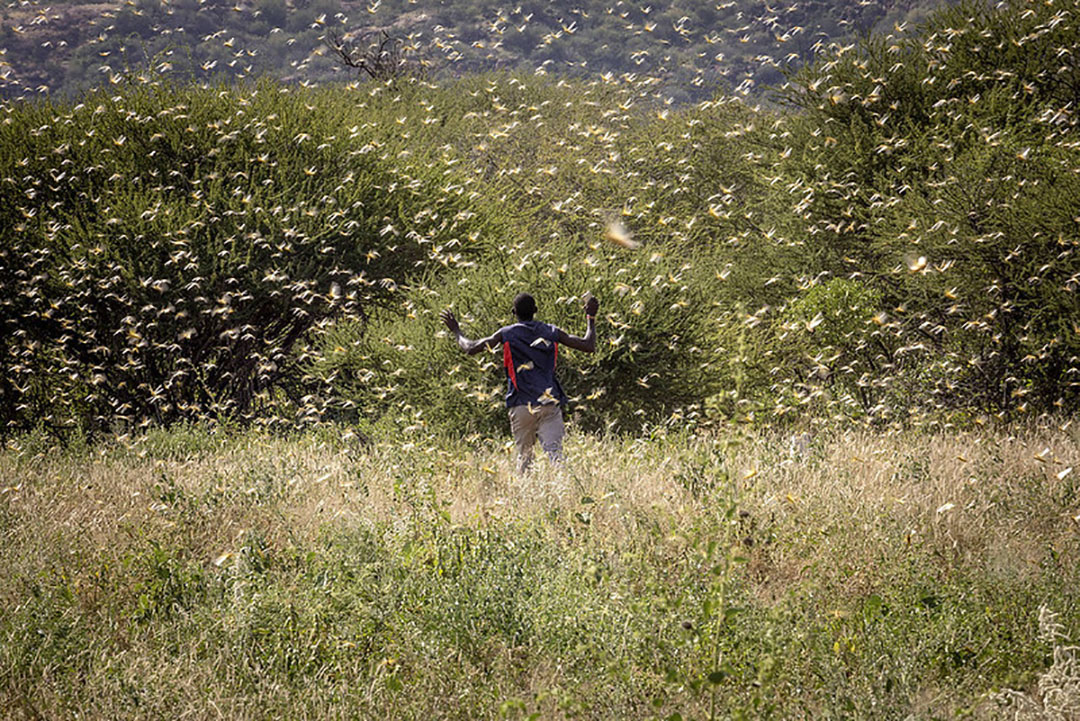Locusts decimate crops in East Africa

City-sized swarms of locusts are unleashing chaos as they descend on crops and pasturelands in 7 East African countries.
According to experts, prolonged and exceptionally wet weather is the primary culprit, causing hundreds of billions of these insects, the desert locusts, to thrive.
These insects can travel up to 150km per day and are considered the most destructive migratory pest in the world. A swarm covering 1 square kilometre contains 40 to 80 million insects, and because the desert locust consumes its own weight in vegetation every day, a swarm can eat the same amount of food in one day as about 35,000 people, posing a serious threat to both crops and grazing land.
…the worst of the outbreak may be yet to come,” – Keith Cressman, FAO.
FAO’s Desert Locust Information Service says it is the worst outbreak to strike Ethiopia and Somalia for 25 years and the worst infestation that Kenya has experienced in 70 years. Djibouti and Eritrea have also been affected, and locusts have been reported in South Sudan, Uganda and Tanzania. Millions of people rely on agriculture and livestock rearing for their survival in this region. Unfortunately, the worst of the outbreak may be yet to come, says Keith Cressman, senior locust forecaster at the Food and Agriculture Organization of the United Nations.

By June, he fears the desert locusts will have increased their numbers 400-fold. The UN has warned of a looming catastrophe. “The potential threat to food security and livelihood in the region is unprecedented. In a country like Ethiopia 80% of the country relies on agriculture. In Kenya, 75% of the population relies on agricultural activities. These locusts are attacking crops and can have extremely devastating consequences on populations that are already vulnerable,” says Cressman, adding that this plaque comes at a terrible time. Soon the locusts will form the next generation and this will coincide with the planting season that is about to start. Farmers will not be able to plant or will delay planting, which will affect harvests. It has terrible impacts, says Cressman. In the last upsurge it took US$ 600 million to bring the situation under control.











